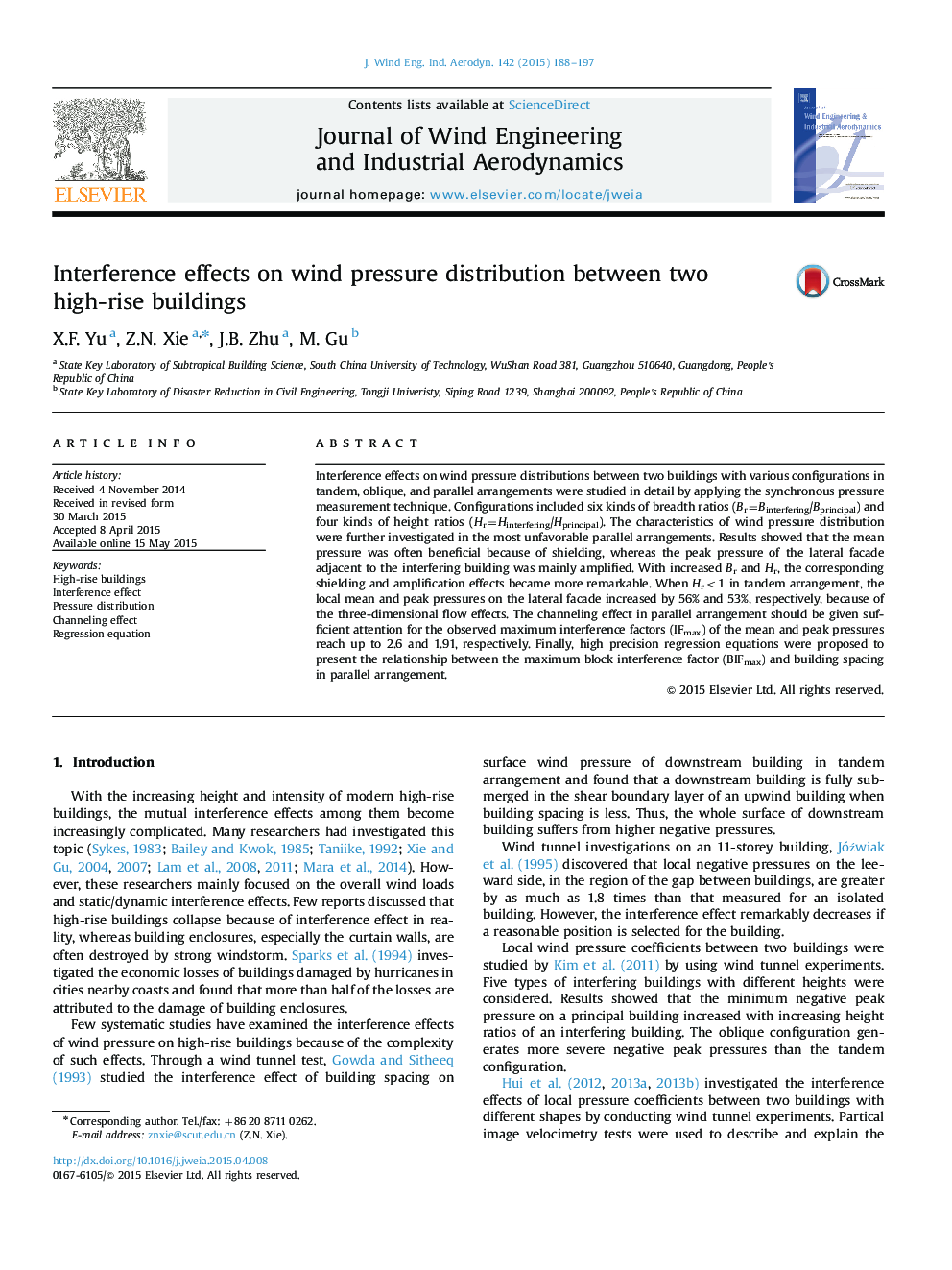| Article ID | Journal | Published Year | Pages | File Type |
|---|---|---|---|---|
| 6757585 | Journal of Wind Engineering and Industrial Aerodynamics | 2015 | 10 Pages |
Abstract
Interference effects on wind pressure distributions between two buildings with various configurations in tandem, oblique, and parallel arrangements were studied in detail by applying the synchronous pressure measurement technique. Configurations included six kinds of breadth ratios (Br=Binterfering/Bprincipal) and four kinds of height ratios (Hr=Hinterfering/Hprincipal). The characteristics of wind pressure distribution were further investigated in the most unfavorable parallel arrangements. Results showed that the mean pressure was often beneficial because of shielding, whereas the peak pressure of the lateral facade adjacent to the interfering building was mainly amplified. With increased Br and Hr, the corresponding shielding and amplification effects became more remarkable. When Hr<1 in tandem arrangement, the local mean and peak pressures on the lateral facade increased by 56% and 53%, respectively, because of the three-dimensional flow effects. The channeling effect in parallel arrangement should be given sufficient attention for the observed maximum interference factors (IFmax) of the mean and peak pressures reach up to 2.6 and 1.91, respectively. Finally, high precision regression equations were proposed to present the relationship between the maximum block interference factor (BIFmax) and building spacing in parallel arrangement.
Keywords
Related Topics
Physical Sciences and Engineering
Energy
Renewable Energy, Sustainability and the Environment
Authors
X.F. Yu, Z.N. Xie, J.B. Zhu, M. Gu,
